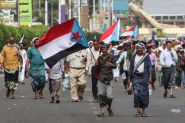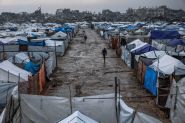
Lebanon on Edge as Israel Raises the Stakes
Bassam Abou Zeid 12/12 20:20

Bassam Abou Zeid 12/12 20:20

This is Beirut 12/12 17:20

This is Beirut 12/12 17:05

This is Beirut 12/12 15:25

This is Beirut 12/12 13:55

This is Beirut 12/12 19:15

This is Beirut 12/12 19:00

This is Beirut 12/12 16:00

This is Beirut 11/12 16:42

This is Beirut 11/12 13:37
Rayan Chami 12/12 16:10
Maria Chami 10/12 14:45
This is Beirut 10/12 14:15
This is Beirut 10/12 13:20

This is Beirut 12/12 17:35

This is Beirut 08/12 18:00

This is Beirut 08/12 13:00

This is Beirut 03/12 15:15

This is Beirut 21/11 12:20

This is Beirut 12/12 09:25

This is Beirut 11/12 19:15

David Sahyoun 10/12 18:00

Bélinda Ibrahim 09/12 18:30

This is Beirut 09/12 09:50

Makram Haddad 12/12 11:10

Makram Haddad 11/12 16:35

This is Beirut 11/12 11:55

Makram Haddad 10/12 14:30

Pierre Daccache 09/12 11:45

Bélinda Ibrahim 11/12 10:30

Bélinda Ibrahim 10/12 12:00

Bélinda Ibrahim 04/12 15:05

Bélinda Ibrahim 03/12 13:00

Makram Haddad 03/12 10:30